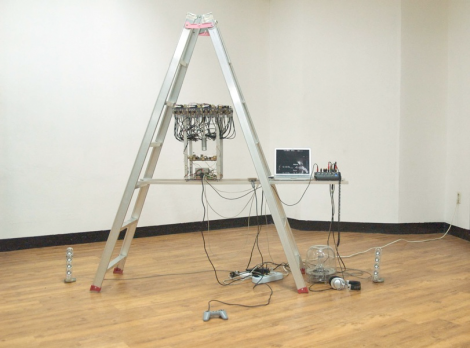
[Bob] has been busy lately putting the finishing touches on three different projects that he plans on entering into the 555 Design Contest.
His first entry is a low-power H-bridge, which can be used to drive small servos. While he admits that it is a bit odd to build use a 555 timer to construct an H-bridge, they are cheap and plentiful enough to justify their use. Check out the video below to see the simple H-bridge controlling a servo.
[Bob’s] second entry is quite a bit more complex than his H-bridge. His secret knock detector listens for a pattern of knocks, triggering a relay if the proper cadence is detected. If a knock is heard, the first 555 timer starts, listening for another knock within a specific time range. If a knock is heard during this period, the next timer is triggered, and the process is repeated. Subsequent knocks must be timed correctly, or the circuit halts, waiting for a reset timer to expire before listening is resumed. It’s a bit hard to get the knocks just right, but that should be fixable with a few small tweaks.
The third entry he sent us is a project that is pretty common, though with a somewhat uncommon implementation. Class D amplifiers are often built as low-power headphone amps for personal audio applications. He liked the idea of a Class D amplifier, but wanted to build something with enough power to listen to his music in a small room. To accomplish this task, he looked over the internal block schematics of a 555 timer and constructed a pair of high-power 555 timers himself, using discrete components to mimic those usually found in the 555 package. His results were decent, though admittedly not of the highest quality, and could be tweaked a bit to provide better sound fidelity.
Continue reading to see videos of each project in action.
















